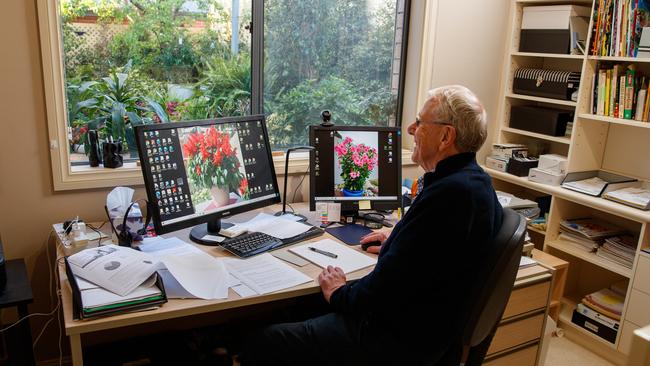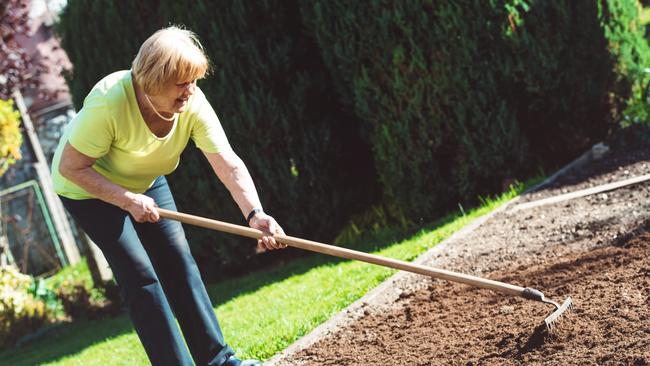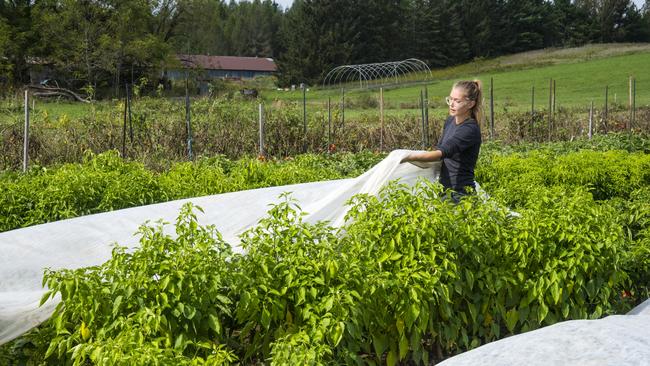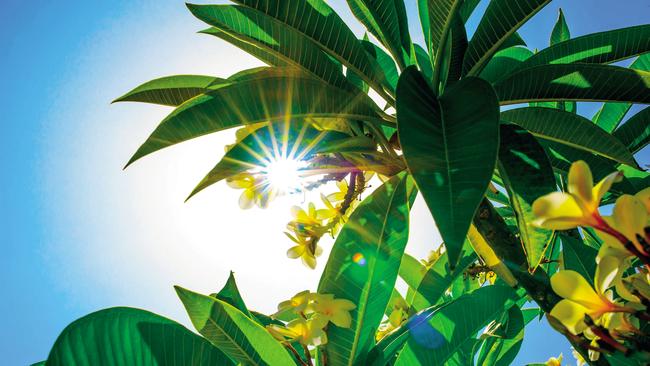Jon Lamb’s final gardening column offers advice on adapting to climate change
Shade protection is top priority when it comes to helping your garden surviving the intense heat of summer, writes garden writer Jon Lamb in his final column, after 40 years with The Advertiser.

Advice
Don't miss out on the headlines from Advice. Followed categories will be added to My News.
It is my belief that temporary shading when added to efficient watering, organic mulch and compost are the key elements that will allow South Australians to keep on gardening as our climate continues to change.
Like it or not, we are going to experience more heatwave weather more often.
For home gardeners, this means more burnt leaves, scalded fruit and brown lawns, along with even more tomato crops ruined by the heat.
The way we water
On many occasions I have written: “Plants with healthy roots growing in the shade, along with heat-tolerant plants growing in full sun, will not suffer damaging heat stress – providing there is adequate moisture in the soil.”
During hot weather, much of the water you apply is used to keep the plants cool. In essence, moisture is taken in through the plant’s roots and passed out through its leaves, creating an evaporative-cooling effect. The aim is to ensure there is enough water in the plant’s root zone to keep plants transpiring freely.
As an example, fruit trees need more water than ornamentals. They also have their main moisture-gathering roots well below the surface, 15cm to 35cm deep. For most plants, the concept of providing more water but less often is very sound.
If you are concerned about the cost of water, consider the benefits of installing water-efficient, low-throw sprinklers or micro-irrigation systems that water your plants but not the spaces in between.
Add organic matter
In South Australia, covering garden beds with a generous layer of organic mulch is a practice that is now widely adopted.
On a very hot day, effective mulch can reduce water loss (evaporation) by 50 to 70 per cent. But of greater importance is the ability of mulch to protect plants during a heatwave by dropping soil temperatures around the roots by 10C to 15C.

Dig it in
When organic matter is composted it has the remarkable ability of being able to absorb 20 to 30 times its own weight in water.
When dug in to the top 15-20 cm of soil, it acts like a giant sponge. Every time it rains or you irrigate, it holds on to the moisture, where it can be used by the roots of plants in the garden.
During hot weather, this practice has the potential to protect your plants from significant heat stress.
The missing element: shade
When temperatures climb into the 40s and over for an extended period, experience over the past decade has shown the combination of effective watering, mulching and incorporating organic matter into the topsoil is no longer sufficient to protect plants from significant heat stress.
I believe the missing element involves shade – or at least, temporary shade – during the heat of summer.
Ideally, we’re talking about 50 per cent white shade cloth, but in essence any kind of shading material is suitable.
The aim must be to keep both air and soil temperatures below 40C. Shading has the potential to:
■ Drop air temperatures in and around a plant’s canopy by 15-25C.
■ Drop topsoil temperatures by 10-15C.
■ Air temperatures: In the full summer sun, these can range between 55C and 65C.
Under shade cloth they are likely to range between 32C and 45C. (At 45C plants may stress but the leaves will not burn – providing the soil is mulched and moist).
■ Soil temperatures: Topsoil temperatures in full sun are likely to range between 35C and 50C.
Under shade they should remain between 30C and 40C.(Adding mulch can reduce soil temperatures by a further 5-10C.)

CALL FOR CHANGE
Back in 2013, I called on the retail garden industry to take the need for temporary home garden shade protection seriously.
All gardeners need is a simple (attractive) framework with a shade cloth covering that can be erected at the beginning of the heatwave season (usually early January), and removed when the risk of heat has gone (late February).
Sadly, we are still waiting.

WEEKLY REMINDERS
Planting
Trees, shrubs, groundcovers and climbers can all be planted with confidence at the moment, but don’t wait too long. They need time to establish a strong root system that will allow them to withstand the stresses of our summer heat.
Insects
Don’t spray aphids and caterpillars unless you really have to, as hot weather and natural predators will keep numbers in check. If needed, control caterpillars on vegetables and bushes by spraying with Dipel or Success Ultra. Both are non-hazardous chemicals and don’t harm the environment when used as directed.
Ants
Watch for ants in the garden as they spread aphids and scale insects, as well as fungal diseases, from one area to another. They are easily controlled if you find their nesting holes and spot spray with an ant nest insecticide.
Fertiliser
Fruit trees, particularly citrus, use a great deal of energy producing new spring growth. If you have not fed your trees this season, apply a balanced fertiliser under the tree’s canopy as soon as possible and water this into the top soil.
Roses
Extend the flowering period of roses by removing spent blooms regularly. Cut very long stems to keep the bushes in shape and stimulate new growth. Add a measuring cup of complete fertiliser to the soil if they have not been fed since early September.
Pruning
Don’t forget to trim Australian natives that have finished flowering. They should be cut back each year to encourage new growth.
Jon Lamb also writes a free weekly Good Gardening advice newsletter, available at gardenandoutdoor living.com or facebook.com/JonLambGoodGardening

